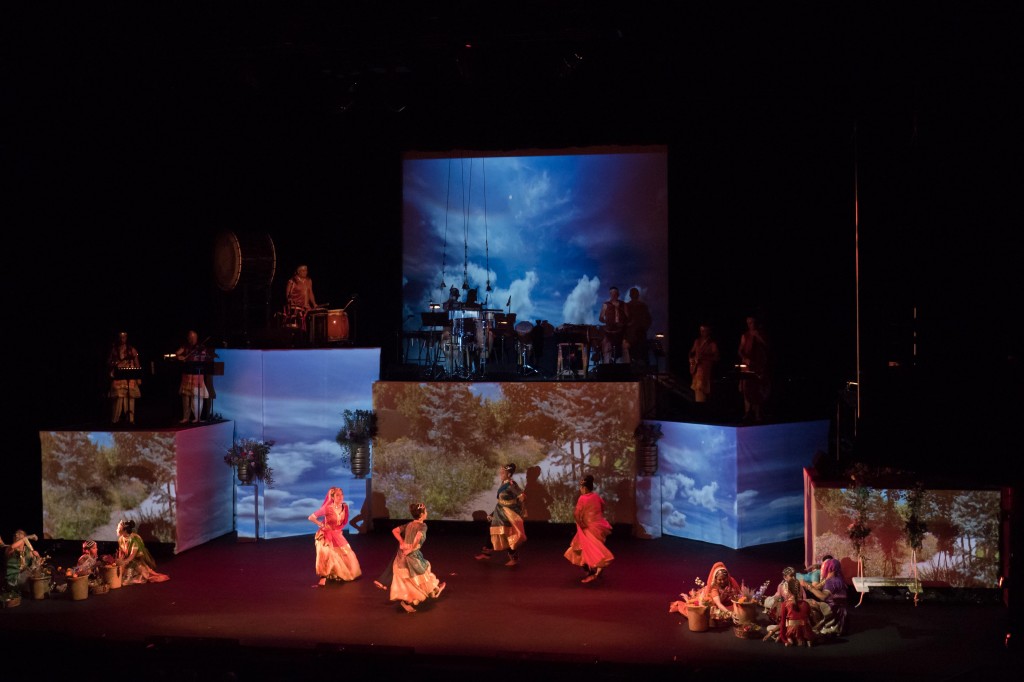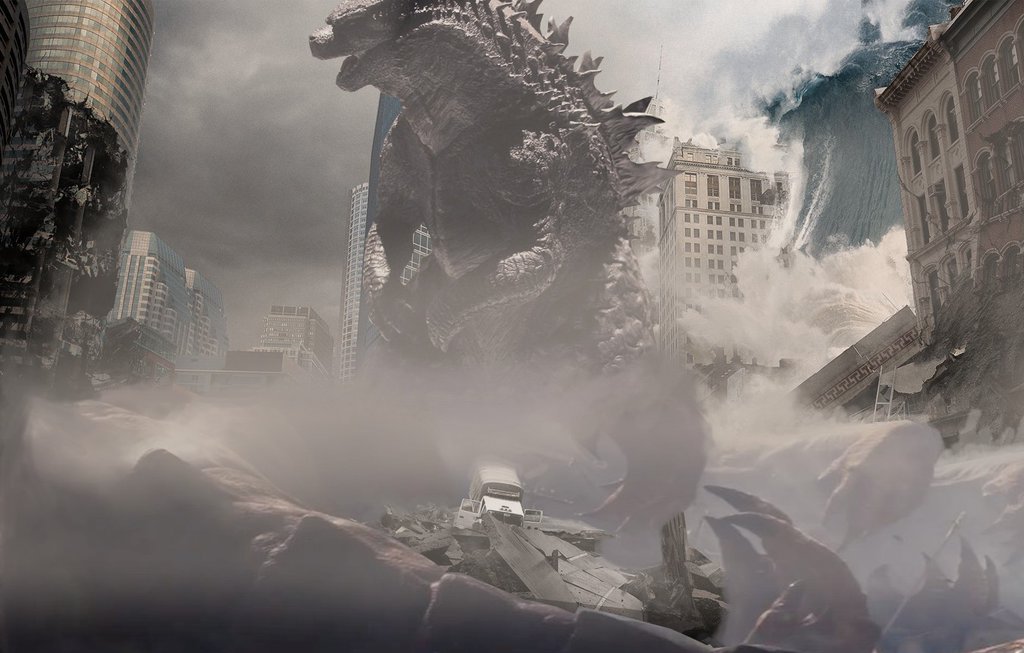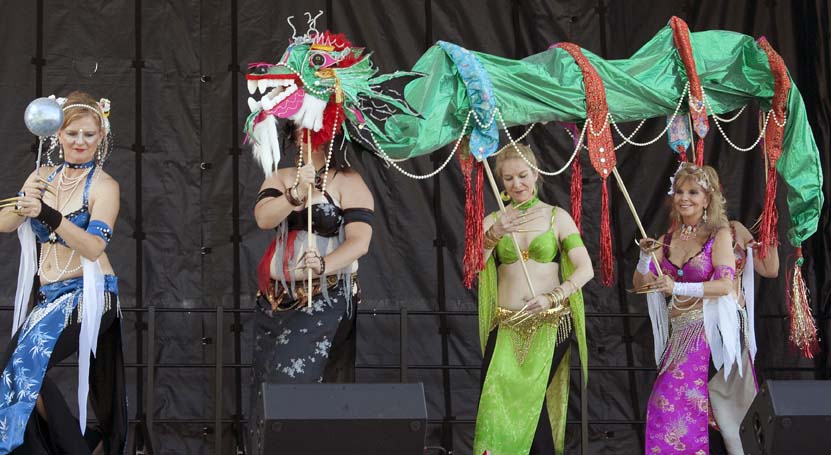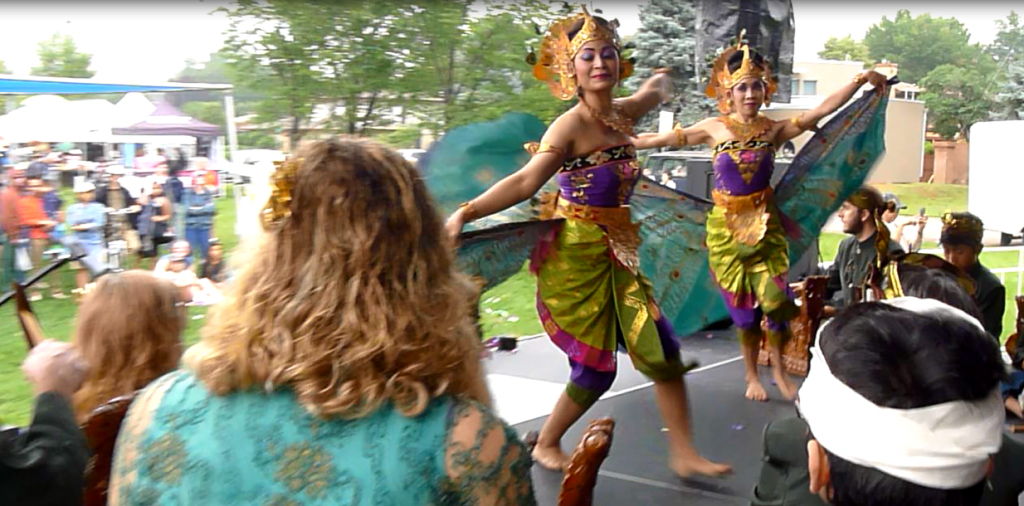“Gyaan” is not your typical showcase of energetic classical and contemporary Indian dance, which Mudra Dance Studio has become known for. It is, but it’s much more too.
The stage at the Lakewood Cultural Center, where Mudra has hosted many of its elaborate, every-other-year professionally-produced shows in the past decade, is partially filled with a backdrop of boxed-in platforms that serve as bandstands for the musicians. The boxes are white before the show, but once the house lights dim, they become three-dimensional screens for a complex visual interplay of videos that help tell the story that’s primarily told through dance in the front part of the stage.
This 3D multimedia richness is just one of the factors that sets “Gyaan” apart from a typical community dance recital, and even a level higher than Mudra’s typically impressive Indian showcases. It was so expensive to produce that the group launched a Kickstarter campaign to help pay for the production (it was only for a small fraction of the cost).
With “Gyaan” — Sanskrit for “knowledge through experience” — Mudra founder Namita Khanna Nariani has a message she wants the audience to absorb: that in today’s world of violence and tragedy, people have to come together and support each other. It seems trite to say it, but this show is about how love and community and art can save us all.
Continue reading














